🍂 Autumn in Zealand: September is cheaper than July, but not ‘deserted’
September in Zealand is a classic shoulder season: no longer the hot peak, but not yet the grey late autumn. At the beginning of the month, daytime temperatures in Copenhagen hover around +19 °C, dropping to +15 °C by the end of the month, with night-time temperatures around +9...+12 °C. Humidity and wind near the water are ever-present, so the weather often feels cooler than the forecast suggests.
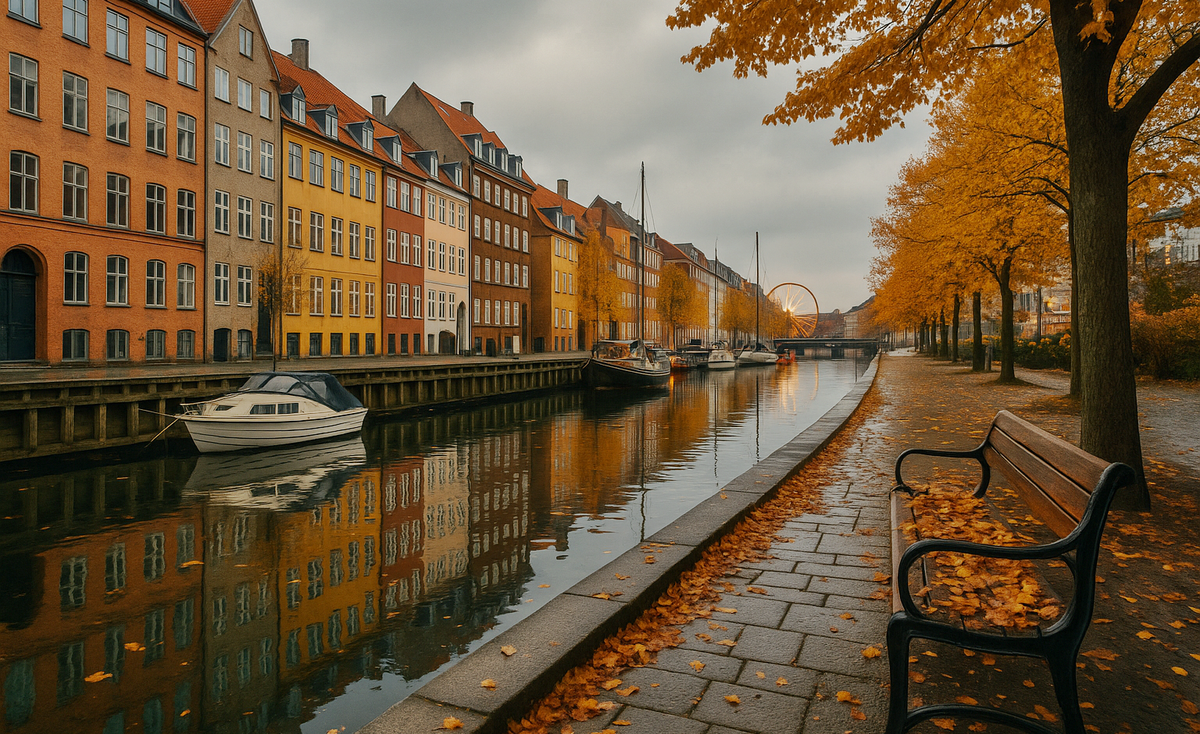
In terms of precipitation, September is usually drier than August: heavy rains do occur, but rapid ‘monotonous downpours every day’ are not typical for this month. The working formula is layers + a light warm jacket + a windbreaker that can be taken off and hung on a backpack if you are lucky with the sun.
The daylight hours are already noticeably shorter than in July, but still comfortable for two active blocks:
- daytime — a trip to Roskilde or the castles,
- evening — a walk around Copenhagen, dinner and the ‘golden hour’ by the water.
In terms of atmosphere, September is a combination of ‘the last days of summer’ (people on the embankments, parks, warm days) and the first signs of autumn in the parks and forests of North Zealand. The city is lively, but without the summer overcrowding of tourists.
🎭 September events: when it's quieter and when it gets busier
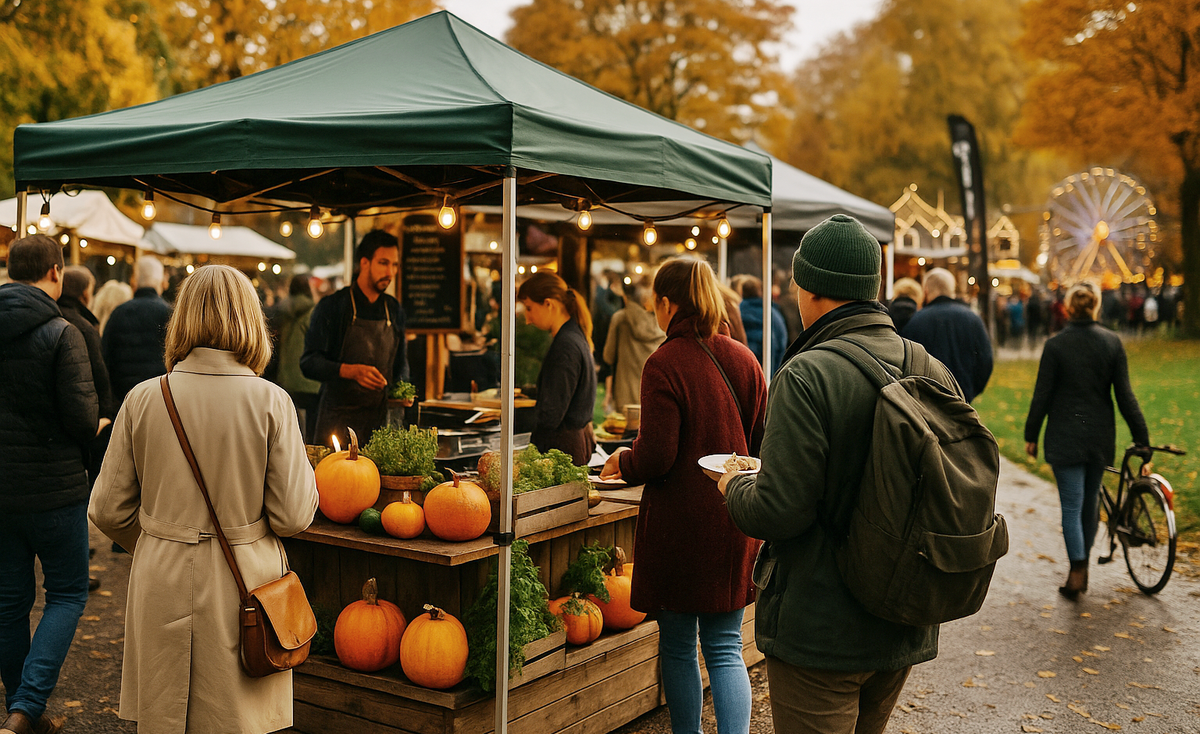
September in Zealand is not ‘empty’ in terms of events — on the contrary, part of the cultural programme moves from summer to early autumn. This affects both the atmosphere and hotel occupancy.
🎨 Golden Days
A major cultural and historical festival, which usually runs from the first to the third week of September. Lectures, exhibitions, themed tours, special programmes in museums and cultural institutions.
- Plus: a great opportunity to catch unusual events and see the city through the prism of history and culture.
- Minus: during peak weekends, demand for accommodation increases, especially in the centre.
🥘 Gastronomic events
The final phase of the food festival season often falls at the beginning of September: busy weekends at markets, special menus in restaurants, themed dinners.
- If you want a quiet city, it is wise to choose weekdays or the second half of the month.
- If you are interested in gastronomy, book restaurants in advance and be prepared for a livelier city centre.
🏃 Copenhagen Half Marathon
Usually held in mid-September. During this weekend: some streets are closed, hotels are busier, and the city centre can be noisier and more dynamic.
If you do not plan to participate or do not want to stay in the epicentre, it makes sense to either choose other dates or book a hotel in quieter areas (Østerbro, Frederiksberg) and take the closures into account in your plans.
🏰 Roskilde and ‘Castle Zealand’: what's convenient in autumn
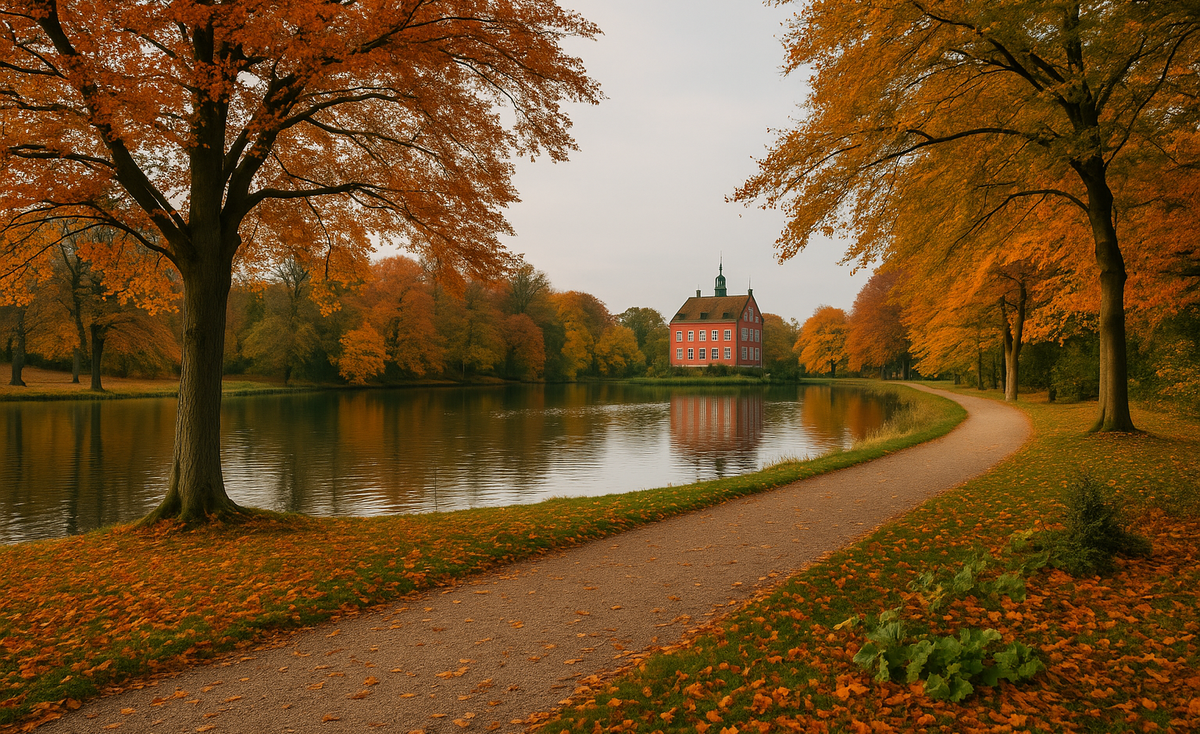
September is ideal for trips around Zealand: it's still light, no longer hot, the park and forests are starting to turn yellow, and the crowds are noticeably smaller than in summer.
⛪ Roskilde and the cathedral
Roskilde is a classic day trip from Copenhagen:
- Roskilde Cathedral (a UNESCO site) is open longer than in winter;
- inside, there are royal tombs, interesting architecture and a view of the fjord;
- on weekdays, it is usually quiet, which is convenient for those who do not like crowds.
⚠️ Important:
🔁 Sometimes parts of the cathedral may be closed for services and ceremonies — it’s worth checking the schedule for the specific day;
🚆 The train ride takes about 25–30 minutes from Copenhagen, followed by a short walk on foot.
🏯 Kronborg (Helsingør)
Hamlet's castle at the entrance to the Øresund is the hallmark of northern Zealand.
- After the summer high season schedule, it operates on autumn hours in September, but remains fully open during the day.
- It is surrounded by the pleasant port city of Helsingør and offers a view of the Swedish side of the strait.
The train from Copenhagen takes about 45 minutes, and the station is within walking distance of the castle.
🖼️ Frederiksborg (Hillerød)
One of the most spectacular castles in Zealand with a large park and water.
- During the season (including September), it is normally open from approximately 10:00 to 17:00.
- In autumn, the views in the park are especially beautiful, with the first autumn colours and soft light.
Take the train to Hillerød, then a short bus ride or walk from the station.
Overall conclusion: September offers comfortable temperatures and light for trips, allowing you to take lots of photos outdoors without having to contend with the summer crowds.
🚆 Routes: 4 days without a car and 5 days with a car
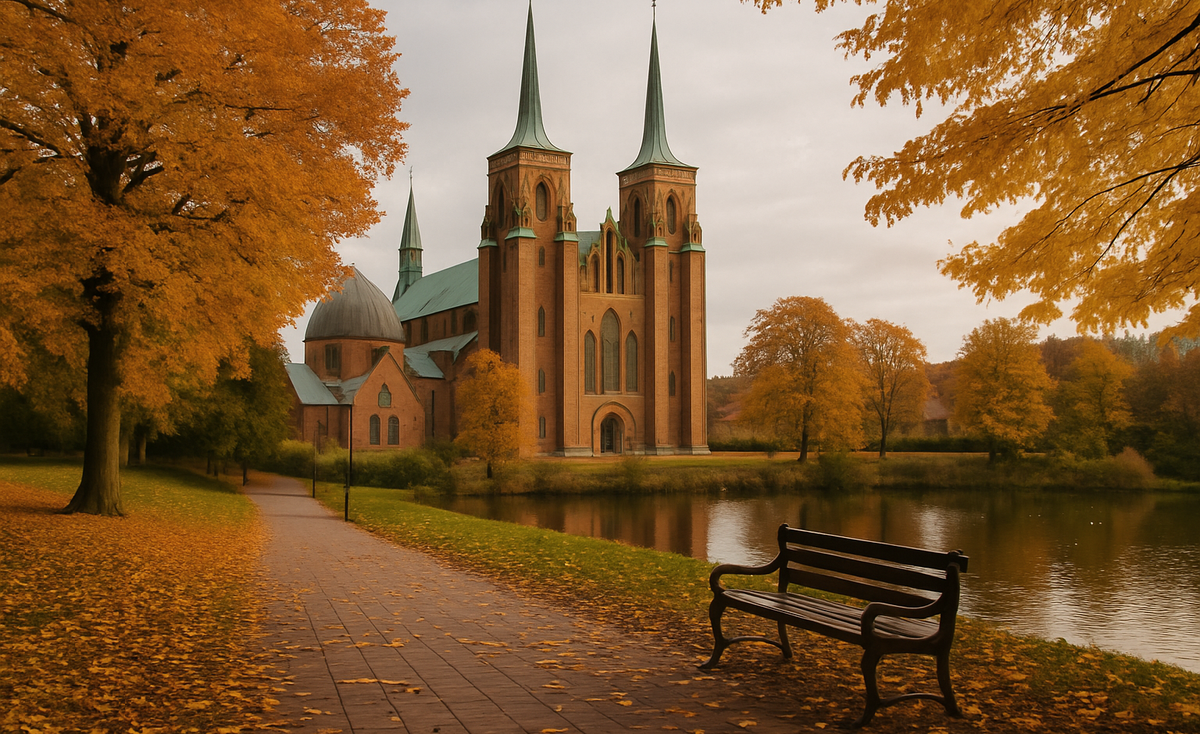
🚉 Option 1: 4 days without a car (trains and S-tog)
Day 1 — Copenhagen, ‘classics + a few neighbourhoods’
- Morning: historic centre, pedestrian streets, Nyhavn.
- Day: walk along the waterfront, canals, one observation deck.
- Evening: dinner, gastropub or walk through the illuminated city centre.
Day 2 — Roskilde
- Morning: train to Roskilde, visit the cathedral.
- Day: walk around the city, along the fjord, Viking museum if desired.
- Evening: return to Copenhagen, quiet dinner or café near the hotel.
Day 3 — Frederiksborg (Hillerød)
- Morning: departure, tour of the castle and exhibitions.
- Day: park, photos by the water, leisurely stroll.
- Evening: return, glass of wine or walk around one of Copenhagen's neighbourhoods.
Day 4 — Kronborg (Helsingør)
- Morning: train to Helsingør, castle, bastions, view of the strait.
- Day: walk along the embankment, maritime museum if desired.
- Evening: return, final dinner in the city.
The format without a car works well in September: trains run regularly, there is enough daylight, and in case of bad weather, you can reschedule your trips (for example, go to the castles on a drier day).
🚗 Option 2: 5 days with a car (more freedom and nature)
Day 1 — Copenhagen, city centre
- Morning and afternoon: classic tourist attractions (city centre, canals, Nyhavn).
- Evening: dinner, walk along the waterfront.
Day 2 — Copenhagen, neighbourhoods and waterfront
- Vesterbro/Nørrebro/Østerbro neighbourhoods, parks, modern waterfront districts.
- Evening — cafés, gastro formats, walk along the waterfront.
Day 3 — Frederiksborg + North Zealand nature
- Morning: trip to the castle, tour of the interiors.
- Day: park, then trip to the forest or lakes (Gribskov, surrounding lakes) — autumn foliage, short hike.
- Evening: return to Copenhagen or overnight stay in a quieter town.
Day 4 — Kronborg + coast
- Morning/day: Helsingør Castle and town.
- Afternoon: trip along the coast of North Zealand, small coastal towns, stops at viewpoints.
Day 5 — Roskilde or ‘delicious’ Zealand
- Option A: Roskilde (cathedral, fjord, town).
- Option B: wineries, cideries, small towns in Zealand — depending on your interests.
Pros of a car: flexible pace, access to locations that are inconvenient to reach by rail, the ability to adjust to the forecast (postpone a long trip to a day with better weather).
Cons: parking and additional costs, the need to plan in advance where to leave the car near the centre and castles.
💶 Budget and logistics: where to save, where to take risks

🏨 Accommodation and demand
- On average, September is cheaper than the July peak: fewer tourists, lower base demand for hotels.
- However, weeks with major events (Golden Days, half marathon, food festivals) can raise prices locally.
- Weekdays traditionally offer the best balance: lower prices and fewer queues at museums and castles.
🚌 Cards and transport
With an active programme in Zealand, it makes sense to consider:
- combining city cards (museums + transport in Copenhagen) and
- travel cards/train tickets in Zealand.
As a rule of thumb:
- if you visit 2-3 paid attractions per day and actively travel to the suburbs, a comprehensive card is often more cost-effective than single tickets;
- if you make 1-2 trips and visit few museums, it may be more rational to pay for everything individually and only purchase a zone pass.
🌧️ Weather and flexibility
September can still bring surprises: rain, stronger winds, and cooler days towards the end of the month.
The best options are: flexible train tickets (so you can change your departure date if necessary), a pre-planned ‘rainy day’ for museums and cafes, and a buffer in your schedule: don't plan two long trips in a row without any room for manoeuvre.
✅ Mistakes and checklist before booking
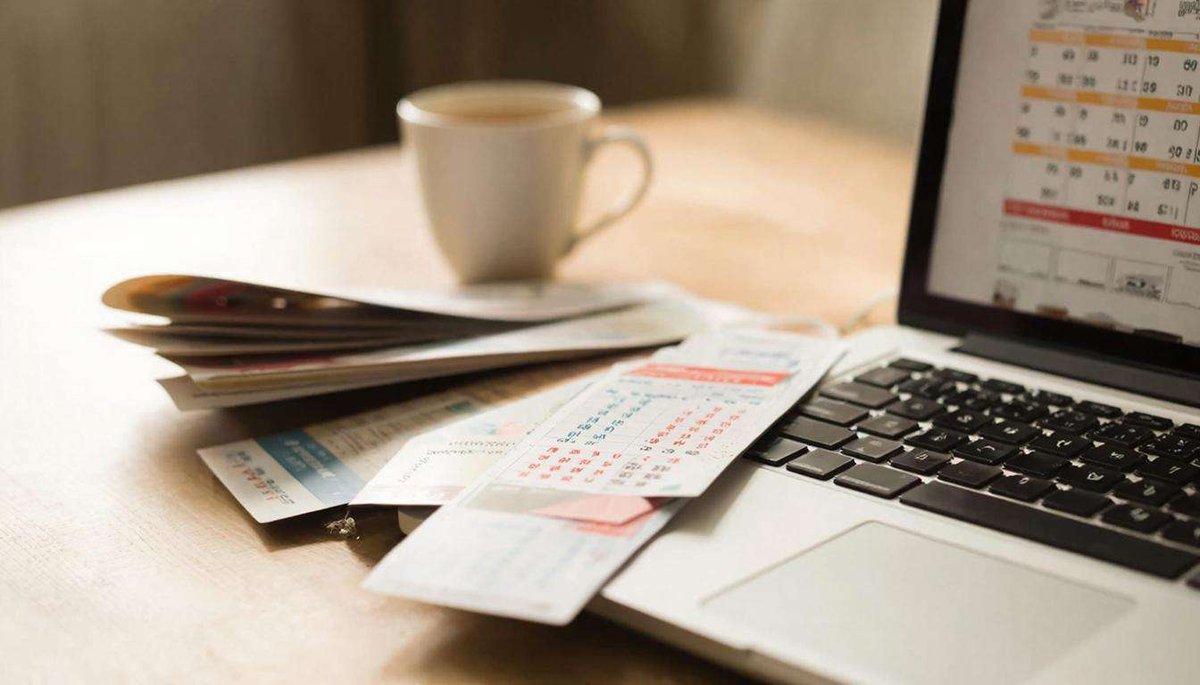
⚠️ Typical mistakes
- Expecting September to be as cheap and empty as February, even if you are visiting during major festivals or a half marathon.
- Not checking the opening hours of Roskilde Cathedral and castles — you may encounter reduced opening hours or partial closure of rooms.
- Overestimating the weather: arriving without a windbreaker, waterproof shoes and layers, counting on ‘almost summer’.
- Overloading your schedule with castles and day trips, leaving no room for a quiet evening in the city.
📌 Checklist before buying
- Check the events calendar for your chosen dates: Golden Days, food festivals, half marathon.
- Check the opening hours of Roskilde Cathedral, Kronborg Castle and Frederiksborg Castle.
- Plan at least one rainy day (museums, galleries, coffee shops).
- Book your anchor slots: trips to castles and cathedrals on weekday mornings when there are fewer people and the light is better.
- Decide on the format: 4 days without a car if you are satisfied with classic Copenhagen and three key rail trips; 5 days with a car if you want to add the nature of North Zealand, small towns and more flexibility.
If you are looking for mild weather, fewer crowds, reasonable prices and a lively cultural calendar, September in Zealand is a strong contender. All that remains is to choose which format you prefer: a compact rail route or a more relaxed ‘autumn Zealand on wheels’.
❓FAQ
💡 If comfort and walking are important to you, the season officially opens in April–May. March is suitable for those who are okay with semi-winter and are betting on museums and hygge breaks in cafes, rather than long walks in parks and along the embankments.
💡 The optimal time frame for March is 2–3 days. Two days are enough for a basic introduction to the city centre and 1–2 museums, and the third day gives you a buffer for bad weather or another ‘indoor day’ without feeling like you flew in just to wait out the rain at the hotel.
💡 April is a classic transition: the weather can jump from ‘sunny days on the waterfront’ to cold, windy rain. There is more daylight, and it is more pleasant to walk around than in March, but you still need a flexible plan with the option of swapping ‘street’ and ‘museum’ days, so that you can make the most of your 3-4 days in the city.
💡 In May, you can already take full advantage of the long daylight hours: parks, embankments, bike rides, trips to Roskilde or to castles. Therefore, each additional day really works — there is no feeling that you have ‘overstayed’ the weather. The 4–5 day format allows you to calmly cover the city, trips, and one ‘easy’ day without rushing around museums.
💡 Basic checklist: layered clothing, windbreaker, waterproof shoes, hat/scarf for March and early April, plus a pre-planned plan B for rain (museums, galleries, markets, coffee shops). At the same time, before buying tickets, it is worth checking the calendar of holidays and events, the opening hours of key attractions, and honestly deciding whether you need +1 day for departure or a possible ‘rained out’ day in your month.





0 comments
Log in to leave a comment